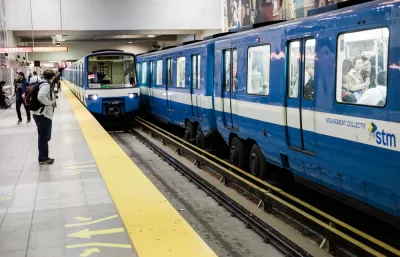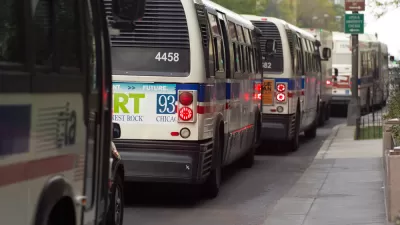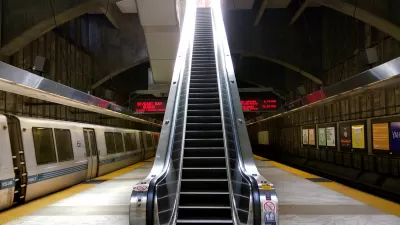"Canada looks a lot like much of the US, in terms of economic types, city sizes and ages, development patterns," Jarret Walker says. So why can't Americans keep pace with Canadian public transit?

Transit ridership is falling. The growth of ride share, low fuel costs and increased car ownership are all likely part of the reason, but it's possible to grow transit in this climate. "But notice the big picture: In a year when urban transit ridership fell overall in the US, it rose in Canada," Jarret Walker writes.
Canada is doing some things notably differently than the United States is, Walker writers: "Canadian cities just have more service per capita than the most comparable US cities. This results in transit networks that remain more broadly useful in the face of competition from other modes." Vancouver, where transit ridership has grown more than any other city in either country can be a particularly instructive example with its concentration of development around transit stations and prevalence of higher gas prices. "Notably, ride-hailing services like Uber and Lyft are not available in Vancouver due to provincial legislation," Walker adds.
To the United States, Canada is the "least foreign country" Walker argues. Americans should be looking to make their cities more like their Canadian counterparts.
FULL STORY: Why Does Ridership Rise or Fall? Lessons from Canada

Planetizen Federal Action Tracker
A weekly monitor of how Trump’s orders and actions are impacting planners and planning in America.

Congressman Proposes Bill to Rename DC Metro “Trump Train”
The Make Autorail Great Again Act would withhold federal funding to the system until the Washington Metropolitan Area Transit Authority (WMATA), rebrands as the Washington Metropolitan Authority for Greater Access (WMAGA).

The Simple Legislative Tool Transforming Vacant Downtowns
In California, Michigan and Georgia, an easy win is bringing dollars — and delight — back to city centers.

The States Losing Rural Delivery Rooms at an Alarming Pace
In some states, as few as 9% of rural hospitals still deliver babies. As a result, rising pre-term births, no adequate pre-term care and harrowing close calls are a growing reality.

The Small South Asian Republic Going all in on EVs
Thanks to one simple policy change less than five years ago, 65% of new cars in this Himalayan country are now electric.

DC Backpedals on Bike Lane Protection, Swaps Barriers for Paint
Citing aesthetic concerns, the city is removing the concrete barriers and flexposts that once separated Arizona Avenue cyclists from motor vehicles.
Urban Design for Planners 1: Software Tools
This six-course series explores essential urban design concepts using open source software and equips planners with the tools they need to participate fully in the urban design process.
Planning for Universal Design
Learn the tools for implementing Universal Design in planning regulations.
Smith Gee Studio
City of Charlotte
City of Camden Redevelopment Agency
City of Astoria
Transportation Research & Education Center (TREC) at Portland State University
US High Speed Rail Association
City of Camden Redevelopment Agency
Municipality of Princeton (NJ)





























